Annals of Psychiatry and Treatment
Pregnancy-related psychological reactions among pregnant women followed-up at the Mermoz improved health post
Racky Wade-Kane1*, Momar Camara2, Christopher Chinwuba Nwachukwu1, Adama Koundoul3, Pape Lamine Faye1, Ndeye Diale Ndiaye Ndongo1 and Aida Sylla1
2Thiaroye Psychiatric Hospital, Cheikh Anta Diop University, Dakar, Senegal
3Psychiatric Health Center of Emile Badiane, Assane Seck University, Ziguinchor, Senegal
Cite this as
Wade-Kane R, Camara M, Nwachukwu CC, Koundoul A, Faye PL, et al. (2024) Pregnancy-related psychological reactions among pregnant women followed-up at the Mermoz improved health post. Ann Psychiatry Treatm 8(1): 001-008. DOI: 10.17352/apt.000056Copyright
© 2024 Wade-Kane R, et al. This is an open-access article distributed under the terms of the Creative Commons Attribution License, which permits unrestricted use, distribution, and reproduction in any medium, provided the original author and source are credited.Introduction: The bodily and psychological changes of pregnancy can be a source of well-being, but also of vulnerability and psychological suffering. The aim of this study was to investigate pregnancy-related psychological reactions in Senegalese pregnant women.
Methodology: This was a prospective, descriptive, and analytical study of pregnant women attended at the Mermoz Health Post in Dakar, Senegal from October 04, 2022, to December 26, 2022. We studied psychological reactions using the Brief Pregnancy Experience Scale, the Depression Anxiety Stress Scale 21, the Marital Support Scale, and the Rosenberg Self-Esteem Scale. Data were collected through semi-structured interviews.
Results: The emotional experience of pregnancy was intense for both positive and negative pregnancy-related elements. Nonetheless, elements perceived as positive were more frequent and more intense. The prevalence of stress symptoms was 25%, depressive symptoms 53%, and anxiety symptoms 75%. The negative psychological impact was closely linked to risk factors such as young age, singlehood, low pregnancy experience (gestational age and parity), and low marital support. Also, low self-esteem in 53.1% of our population was correlated with low marital support.
Conclusion: Most pregnant women report a positive pregnancy experience, but this positive feeling does not exclude high levels of stress, anxiety, and depression.
Introduction
Pregnancy is the period from conception to the birth of the baby. It involves an intense work of identity, during which the woman becomes a mother. Conceiving a child is an emotional tidal wave, a psychological upheaval, whose underlying physiological aspects, particularly hormonal, must not overshadow the psychological stakes. A time of fragility and maturation, pregnancy always involves major psychological reorganization, well known to perinatal psychotherapists. Pregnancy prepares a woman for changes that will affect all areas of her life, from her self-image and body to her relationship with her partner and her social, professional, and family life.
Psychological reactions are the mental and behavioral manifestations that occur in response to an event or situation that in this case corresponds to pregnancy. Numerous authors have described the psychic movements and reorganizations, particularly of identity, inherent in motherhood, and shown how complex this process is [1]. Part of this process begins in the pre-conception phase, but the bulk of maternogenesis takes place during pregnancy.
To a greater or lesser degree, every pregnant woman experiences psychological ambivalence, frequent mood swings from exhaustion to elation, emotional distress, and/or mixed anxiety-depressive disorder [2]. In addition, pregnancy can be understood as a specific highly emotional state, which can be a powerful stressor. Research indicates an important role of prenatal maternal stress in the occurrence of preterm birth and low birth weight [3]. It has also been pointed out that the role of stress in the development of gestational hypertension is a very serious problem in perinatology [4].
Nevertheless, many experts believe that pregnancy is a period of growth and possible development of a woman’s personal potential, leading to a new level of integration. Similarly, Bibring and Valenstein describe pregnancy as a biopsychosocial crisis that, under the right conditions, can lead to personal maturity. The result has far-reaching effects not only on the mother but also on the early affective relationships between mother and child [5].
In Senegal, there are few research studies dealing specifically with psychological reactions to pregnancy. In this context, the aim of our study is to assess pregnancy-related psychological reactions, by quantifying emotional valence, and possible symptoms of stress, anxiety, and depression in Senegalese pregnant women.
Methodology
Study setting
Our study was conducted at the Mermoz urban health post, which helps to facilitate access to healthcare for the population.
Type and period of study
This is a qualitative and longitudinal study with descriptive and analytical aims, which took place over a continuous period from October 04, 2022, to December 26, 2022.
Study population
The study involved 32 pregnant women who attended the Mermoz health post. The sample was constituted through consecutive recruitment based on the daily consultation list of patients followed up or coming to consult for the first time at the health post.
Inclusion criteria concerned:
- Pregnant women attended the Mermoz health center.
- Senegalese pregnant women.
- Pregnant women who had freely consented to participate in our study.
The non-inclusion criteria concerned women who did not complete the questionnaire for various reasons.
Exclusion criteria concerned:
- Women with somatic pathologies.
- Women with a psychiatric history.
- Women who did not understand the languages (French and Wolof) on the form.
Collection tools and methods
Tools: The questionnaire is made up of different parts, each comprising variables and their modalities. These are:
- Socio-obstetrical data
- Marital status: age, marital status
- Obstetrical history: gestational age and parity
- Scales:
- Brief Pregnancy Experience Scale (Brief PES)
- Depression Anxiety Stress Scale Test 21 (DASS 21)
- Rosenberg Self-Esteem
- Marital support assessment
Data collection methods: Following free and informed consent in the consultation room, we carried out a semi-structured interview based on tested and validated questionnaires. The title of the study, its framework, objectives, and the time required to complete the form were clearly defined.
Data entry and processing
With the help of a statistician, a data entry mask was created. The data were extracted and analyzed using Microsoft Office Excel 2019 and Jamovi 2.3 software. Categorical variables were described in terms of headcount and percentage, and quantitative variables in terms of mean, standard deviation, extremes, and median. Fischer’s exact test was used to identify potential risk factors associated with symptoms of stress, anxiety, and depression. Statistical tests are considered significant if the p value is less than 0.05.
Making contact
Before starting the survey, a meeting was held with the head nurse and the midwife of the facility, who were given a copy of the questionnaire.
Ethical, legal, and administrative considerations
Our study protocol was approved by the Head of Psychiatry at Fann Hospital and by the midwife in charge of the maternity ward at the health center after an interview with the investigator and presentation of the study protocol. All information was collected in compliance with the rules of medical ethics, i.e., anonymity, free and informed consent, and conservation of data collected by the principal investigators of the study.
Results
Descriptive study
Age of the population: Patient ages ranged from 17 to 42 years, with a mean of 27.8 years. The 17 - 25 age group was slightly in the majority, accounting for 40% of cases (Figure 1).
Marital status: One in four women was single (25%), while the remaining 75% were married. There were no divorced or widowed women (Figure 2).
Gravidity: One woman in four (25%) was having her first pregnancy, while the remaining 75% were having at least their second gravida. Among multigravida women, 79% had 2 to 4 gravidas, while the remainder had 5 or more (Figure 3).
Parity: There were as many nulliparous women (31%) as primiparous women. The remaining 38% were multiparous (Figure 4).
Marital support: Women’s appreciation of the marital support they receive is not identical. While 41% of women are pleased to receive more support from their partner, over a third (34%) feel that this support has diminished with pregnancy (Figure 5).
Self-esteem: Pregnant women’s perception of their self-esteem was not identical. Indeed, more than half (53%) of the women surveyed claimed to have low self-esteem (Figure 6).
Emotional valence during pregnancy: In our series, one felt element was nominated as happy by 100% of the 32 participants (Visits to the obstetrician/midwife) and two elements by 96% of the participants (Frequency with which the baby moves and Courtesy/assistance from others because you are pregnant) (Table 1).
The most frequent of the negatively felt items nominated were less systematically approved by 78% (Concerns about physical symptoms -pain, bleeding, etc.- and Normal discomforts of pregnancy -heartburn, incontinence-) (Table 1).
Except for the positively felt item (Item 4: making or thinking about crèche arrangements), exhilarating items were generally more systematically put downstream than worries (62 to 100% vs. 50 to 78%), and with greater intensity (1.281 to 2.688 vs. 0.781 to 1.594) (Table 1).
Analytical study
Results of DASS 21 scale criteria: Symptomatology associated with stress (Table 2)
37.5% of pregnant women had a score above 14, i.e., a stress level ranging from mild to very severe.
In the 17-25 age group, 69.2% were affected by high levels of perceived stress. The intensity of pregnancy-related stress decreases with age. Analysis of variance confirms this finding with a p - value = 0.0006.
Women with more experience in terms of the number of pregnancies feel less stressed than those just starting out. Analysis of variance confirms this result (p = 0.0332).
Single women are more stressed by pregnancy than married women. This statistically significant relationship between stress and marital status is confirmed by Fisher’s exact test with p - value < 0.001.
Primigravidas (21%) were exposed to a higher level of stress than multigravida women (15.6%), with a statistically significant difference, p < 0.001.
Among multigravidas, women with more experience in terms of number of pregnancies felt less stressed than those who were just starting out. Analysis of variance confirms this result (p = 0.0332).
Nulliparous women (25%) were more exposed to higher levels of stress than primiparous (6.2%) and multiparous (6.3%) women, with a statistically significant difference, p < 0.001.
Women who received more marital support were less stressed than those who received less (p < 0.001).
The intensity of emotional valence increased with the severity of stress. This difference is statistically significant (p -value = 0.0207).
The higher the intensity of pregnancy-related emotional valence, the more stressed women are.
Anxiety symptomatology
In our series, 85% of women had mild to severe anxiety symptomatology, with moderate anxiety predominating at 34% (Table 3).
There was a difference in the average age of women according to their experience of anxiety during pregnancy. Indeed, the 17 - 25 age group had a predominance of extremely severe anxiety (38.5%), whereas the 26 - 34 and 35 - 42 age groups had a predominance of moderate anxiety at 45.5% and 62.5% respectively. However, this apparent difference is not statistically significant (p - value = 0.0650).
Married women are less anxious overall than single women. This observation is confirmed by Fisher’s exact test, which returns a (p = 0.005).
The average number of pregnancies carried by a woman varies according to the intensity of her anxiety about the current pregnancy. However, this difference is not statistically significant (p = 0.3338).
There was no statistically significant difference between anxiety level and parity of women (p = 0.11). However, among nulliparous women who were anxious (28.1%), almost half (12.5%) were very anxious, whereas among multiparous women (34.4%), more than half (25%) were mildly anxious.
Statistical tests revealed that anxiety in pregnant women was unrelated to marital support received during pregnancy (p -value = 0.233).
The difference between the intensity of the average emotional valence observed and the anxiety levels was not statistically significant (p - value = 0.1731) (Table 3).
Depressive symptomatology
In our series, 85% of women had mild to very severe depressive symptomatology, with a predominance of mild depressive symptomatology at 31%. The average age of the women changed as the intensity of depression decreased. Indeed, younger women experience extremely severe depression, while older women describe their depression as mild. This trend is confirmed by the analysis of variances, with p - value = 0.0005 (Table 4).
The 17 - 25 age group was affected by a high level of depressive symptomatology (77%), with a predominance of very severe depressive symptomatology at 38.5%.
100% of the 35 - 42 age group had depressive symptomatology, however, the majority had mild depression at 75% and the remainder had moderate depression according to the DASS21 scale.
A woman’s marital status had a statistically significant effect on the level of depression she experienced during pregnancy (p - value < 0.001). Married women were mildly depressed (31.3%), while single women (15.6%) were extremely depressed.
Nulliparous women (12.5%) were more exposed to very severe depression than primiparous (3.1%) and multiparous (0%) women, with a statistically significant difference, p = 0.013.
Women who received more marital support were less exposed to depression than those who received less, and the difference was significant p - value = 0.045.
The more severe the level of depression, the higher the intensity of emotional valence. This difference was statistically significant (p - value = 0.031). The higher the intensity of emotional valence linked to pregnancy; the more exposed women are to depression (Table 4).
Relationship between self-esteem and marital support.
The results show that patients who received more or the same amount of support from their spouse had higher self-esteem, and the difference was highly significant, p = 0.003 (Table 5).
Discussion
Age of the population
The average age of the women who agreed to answer the questionnaire was 27.8 years. This is representative of the childbearing age in Senegal, according to the National Statistics and Demography Agency (NSDA), which was 29.9 years in 2022 [6].
Emotional valence
In our series, one felt element was designated exhilarating by 100% of participants (Visits to the obstetrician/midwife) and two elements by 96% of participants (frequency with which the baby moves and courtesy/assistance from others because you’re pregnant). Visiting the midwife is a positive experience for pregnant women. They feel listened to and advised by this health professional, who specializes in normal pregnancies. Pregnant women can also benefit from information and psychological support from the midwife, who helps them cope with pregnancy-related difficulties such as stress, depression, or anxiety. Pregnant women also appreciate the fact that their babies move around in their wombs, enabling them to bond with the baby and follow its development. They also appreciate the courtesy and assistance of others, who show them kindness.
A study of the effects of maternal emotion on fetal development involving 112 pregnant women produced similar results. Two items were rated as happy by 100% of participants (how much the baby moves and thinking about how the baby looks) [7].
About item 4 of the Brief PES (Making or thinking about day-nursery arrangements), the fact that it was less approved could be explained by several factors, such as the high cost of services, the preference for family or community solutions, or the scarcity of supply.
Our results show that the emotional experience of pregnancy is as intense for pregnancy-related elements perceived as positive as for those perceived as negative. Nonetheless, elements perceived as positive are more frequent and more intense than elements perceived as negative.
DASS21 scale criteria and factors linked to psychological reactions to pregnancy
In our series, 25% of pregnant women had moderate to extremely severe stress levels according to the DASS21.
Our results concurred with those found in the literature. A study of perceived stress and anxiety in pregnant women in Ghana showed a prevalence of stress of 28.6% [8].
This figure is slightly lower than the study carried out in Saudi Arabia (33.4%) [9] but higher than the studies carried out in Ethiopia (11.6%) [10].
In our series, 75% of women had anxious symptomatology with moderate to extremely severe pain. The rate of extremely severe anxiety was 18.8%.
A systematic review and meta-analysis on the prevalence of antenatal anxiety in 2018 showed that the prevalence of antenatal anxiety was 22.9% [11].
A multivariate Bayesian meta-analysis on the prevalence of anxiety disorders during pregnancy in 2019 showed the prevalence of having at least one anxiety disorder during pregnancy or more is estimated at 20.7% [12].
In our series, 53.6% of women had depressive symptoms. The rate of extremely severe depressive symptomatology was 18.8%.
A systematic review of the prevalence of perinatal depression in January 2023 showed that the average overall prevalence of prenatal depression was 28.5% [13]. Our study showed a significant discrepancy in the prevalence of depression, which would require further investigation. One possible reason for this discrepancy is that the scales used to measure levels of stress, anxiety or depression were not the same in each study. In our series, the intensity of pregnancy-related stress decreased with age. In the 17-25 age group, 69.2% of women were stressed, compared with 34.1% of women aged over 25.
These results contradict those of studies conducted in Ghana in 2015, which showed that age was higher (28.1 ± 5.8; p = 0.0155) in women suffering from pregnancy-specific stress than in normal women (25.0 ± 7.9) [8].
A study conducted in Ethiopia in 2019 on perceived stress and its associated factors in pregnant women also showed that older women (> or = 35y) were more stressed than younger women (< 34y) [10].
In our series, the intensity of pregnancy-related anxiety and depressive symptomatology decreased with age. However, this difference was significant for depressive symptomatology (p < 0.001) but not significant for anxiety symptomatology (p = 0.065).
This difference could be explained on the one hand by the fact that in our population, young women (< 25 years) are predominantly single (72.7%, p = 0.016), while women aged > 27 are 100% married. In fact, single women are more stressed, anxious, and depressed during pregnancy than married women. On the other hand, very young, single pregnant women are more likely to be stressed for a number of reasons. They may face financial, social, and family difficulties, as well as discrimination. They may also fear for the future, their baby’s health, and their ability to raise a child alone.
In our series, primigravidas (21%) were exposed to a higher level of stress than multigravida women (15.6%) with a population three times larger, and the difference was statistically significant, p < 0.001. Among multigravidas, women with more experience in terms of number of pregnancies felt less stressed than those at the beginning (p = 0.0332).
In our series, nulliparous women were more exposed to a higher level of stress (25%) than primiparous (6.2%) and multiparous (6.3%) women, with a statistically significant difference, p < 0.001. The same finding was made in a study assessing the perceived stress of pregnant women in Marseille, which showed that primiparous women were significantly (p < 0.001) more stressed [8]. Women with more pregnancy experience are less depressed than those with less: for gravidity (p = 0.032) and for parity (p = 0.045).
We found no studies that examined gravidity as a factor in stress, anxiety, or depression in pregnant women. However, several factors may explain this difference, such as the inexperience of first-time pregnant women, fears related to childbirth, unprecedented physical and psychological changes, or social and family expectations.
In our series, women who received more marital support were less stressed (p < 0.001) and depressed (p = 0.045) than those who received less. Statistical tests revealed that anxiety in pregnant women was unrelated to marital support received during pregnancy (p - value = 0.233).
We found no studies specifically addressing the relationship between marital support and stress levels of depression and anxiety. However, it has been reported in the literature that inappropriate marital support such as negative moods in the partner can be predictive of postnatal distress [14].
In our series, 53.1% of pregnant women had low self-esteem. These results are not consistent with a study in Tunisia on body image and self-esteem in pregnant women in 2020, which showed that 94% of pregnant women had moderate to high self-esteem [15]. This difference could be due to the different study contexts, as our population has high depression scores, which may influence pregnant women’s self-esteem. Also, Chang, et al. showed that 50% of women were dissatisfied with their bodies and worried about returning to their pre-pregnancy bodies after childbirth [16].
Limitations of the study
Our study was carried out in a health post that occupies the peripheral level in the organization of care in Senegal where there are limited personal resources and reception capacity. This explains the small size of our sample which makes the study inconclusive.
Recommendations
At the end of our work carried out in a Senegalese context, we make recommendations to:
- Help women identify signs of stress, anxiety, or depression
- Train healthcare professionals to identify signs of stress, anxiety, and depression in pregnant women to provide appropriate support.
- Promote specific psychological support programs for pregnant women with high-risk factors for pregnancy-related negative psychological reactions.
Conclusion
Pregnancy is not just a biological phenomenon, but also a complex psychosocial process that mobilizes the emotional, cognitive, and relational resources of the pregnant woman, giving rise to a variety of psychological reactions. These transformations can be a source of joy or well-being, but also of vulnerability and psychological suffering. This suffering can manifest itself in symptoms of stress, anxiety, or depression, with potentially harmful consequences for the mother, the progress of the current pregnancy, future pregnancies, or the child.
- Mathon-Tourné L. The singularity of motherhood illuminated by transgenerational scenarios. Clinical and projective psychology. 2013;19(1):269‑87.
- Bjelica A, Kapor-Stanulović N. Trudnoća kao psiholoski dogadaj [Pregnancy as a psychological event]. Med Pregl. 2004 Mar-Apr;57(3-4):144-8. Serbian. doi: 10.2298/mpns0404144b. PMID: 15462597.
- Staneva A, Bogossian F, Pritchard M, Wittkowski A. The effects of maternal depression, anxiety, and perceived stress during pregnancy on preterm birth: A systematic review. Women Birth. 2015 Sep;28(3):179-93. doi: 10.1016/j.wombi.2015.02.003. Epub 2015 Mar 9. PMID: 25765470.
- Bjelica A. Dozivljaj stresogenosti trudnoće i strategije prevladavanja stresa kod zena sa hipertenzijom indukovanom trudnoćom [Pregnancy as a stressful life event and strategies for coping with stress in women with pregnancy-induced hypertension]. Med Pregl. 2004 Jul-Aug;57(7-8):363-8. Serbian. doi: 10.2298/mpns0408363b. PMID: 15626294.
- Bibring GL, Valenstein AF. Psychological aspects of pregnancy. Clin Obstet Gynecol. 1976 Jun;19(2):357-71. doi: 10.1097/00003081-197606000-00010. PMID: 1277609.
- National Agency for Statistics and Demography (ANSD) of Senegal. A center of excellence in a strong National Statistical System. 2022. Available on: https://www.ansd.sn/
- DiPietro JA, Christensen AL, Costigan KA. The pregnancy experience scale-brief version. J Psychosom Obstet Gynaecol. 2008 Dec;29(4):262-7. doi: 10.1080/01674820802546220. PMID: 19065395; PMCID: PMC2805904.
- Boakye-Yiadom A, Shittu SO, Dutt JB, Dapare PPM, Alhassan A. Perceived stress and anxiety among Ghanaian pregnant women. Journal of Medical and Biomedical Sciences. 2015; 4(2):29‑37.
- Ahmed AE, Albalawi AN, Alshehri AA, AlBlaihed RM, Alsalamah MA. Stress and its predictors in pregnant women: a study in Saudi Arabia. Psychol Res Behav Manag. 2017 Apr 10;10:97-102. doi: 10.2147/PRBM.S131474. PMID: 28435340; PMCID: PMC5391829.
- Engidaw NA, Mekonnen AG, Amogne FK. Perceived stress and its associated factors among pregnant women in Bale zone Hospitals, Southeast Ethiopia: a cross-sectional study. BMC Res Notes. 2019 Jun 24;12(1):356. doi: 10.1186/s13104-019-4383-0. PMID: 31234892; PMCID: PMC6591949.
- Dennis CL, Falah-Hassani K, Shiri R. Prevalence of antenatal and postnatal anxiety: systematic review and meta-analysis. Br J Psychiatry. 2017 May;210(5):315-323. doi: 10.1192/bjp.bp.116.187179. Epub 2017 Mar 16. PMID: 28302701.
- Fawcett EJ, Fairbrother N, Cox ML, White IR, Fawcett JM. The Prevalence of Anxiety Disorders During Pregnancy and the Postpartum Period: A Multivariate Bayesian Meta-Analysis. J Clin Psychiatry. 2019 Jul 23;80(4):18r12527. doi: 10.4088/JCP.18r12527. PMID: 31347796; PMCID: PMC6839961.
- Al-Abri K, Edge D, Armitage CJ. Prevalence and correlates of perinatal depression. Soc Psychiatry Psychiatr Epidemiol. 2023 Nov;58(11):1581-1590. doi: 10.1007/s00127-022-02386-9. Epub 2023 Jan 16. Erratum in: Soc Psychiatry Psychiatr Epidemiol. 2023 Apr 20;: PMID: 36646936; PMCID: PMC9842219.
- Furukawa TA, Hori S, Azuma H, Nakano Y, Oshima M, Kitamura T, Ogasawara Sugiura M, Aoki K. Parents, personality or partner? Correlates of marital relationships. Soc Psychiatry Psychiatr Epidemiol. 2002 Apr;37(4):164-8. doi: 10.1007/s001270200010. PMID: 12027242.
- JI M. Body image and self-esteem in pregnant women. Sfax, N°35; 2020; 50-55.
- Chang SR, Chao YM, Kenney NJ. I am a woman and i'm pregnant: body image of women in Taiwan during the third trimester of pregnancy. Birth. 2006 Jun;33(2):147-53. doi: 10.1111/j.0730-7659.2006.00087.x. PMID: 16732781.
Article Alerts
Subscribe to our articles alerts and stay tuned.
 This work is licensed under a Creative Commons Attribution 4.0 International License.
This work is licensed under a Creative Commons Attribution 4.0 International License.
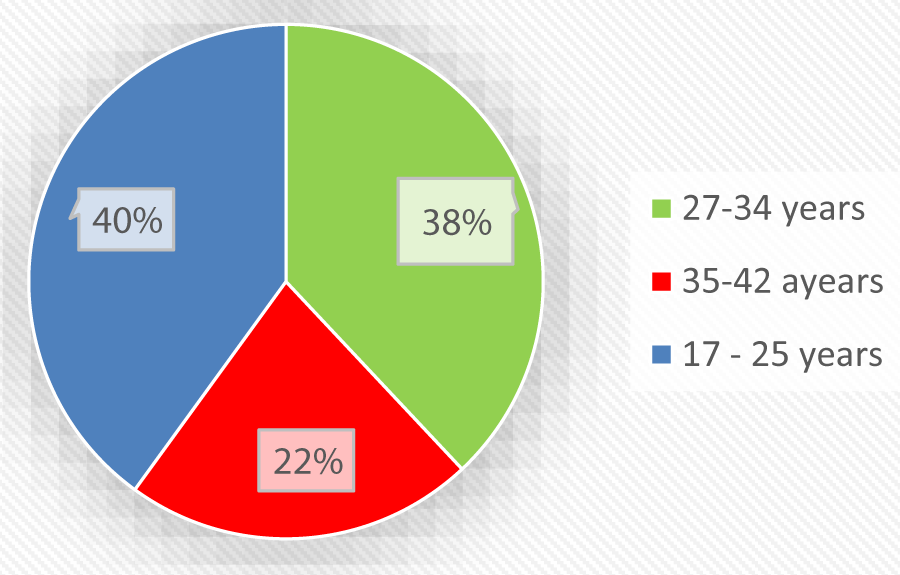
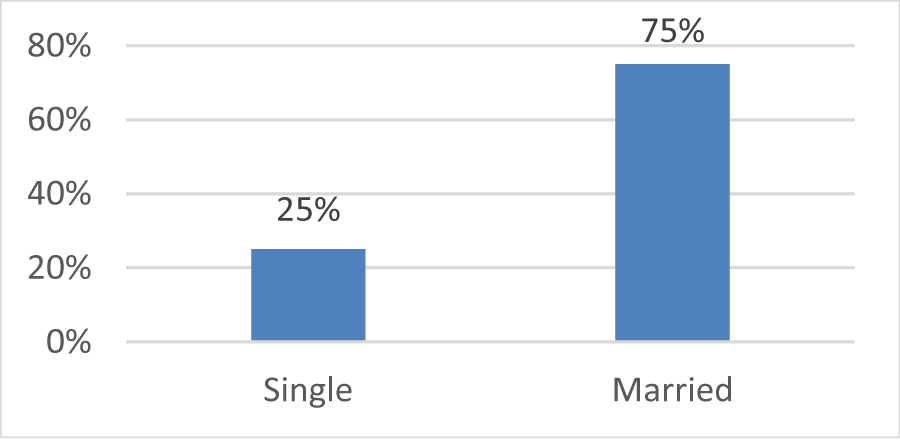
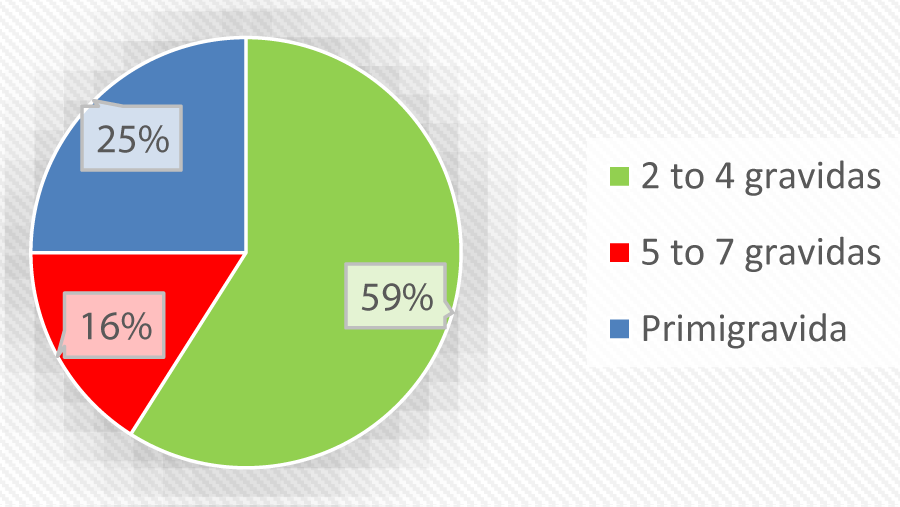
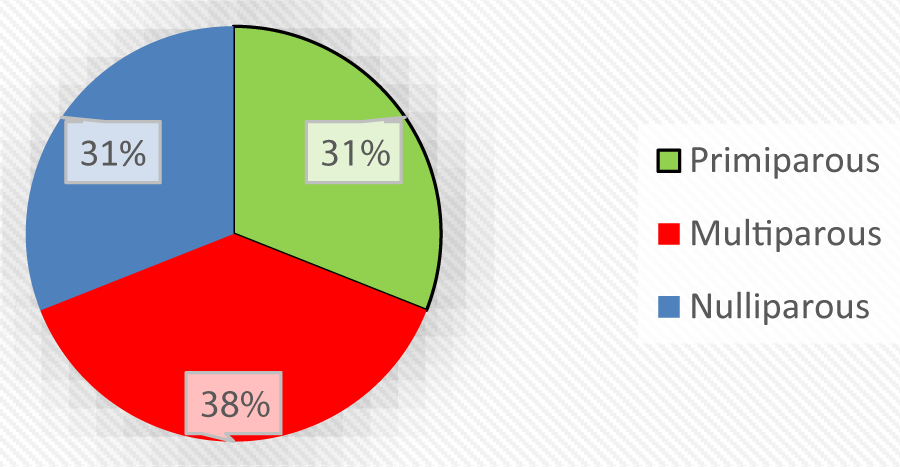
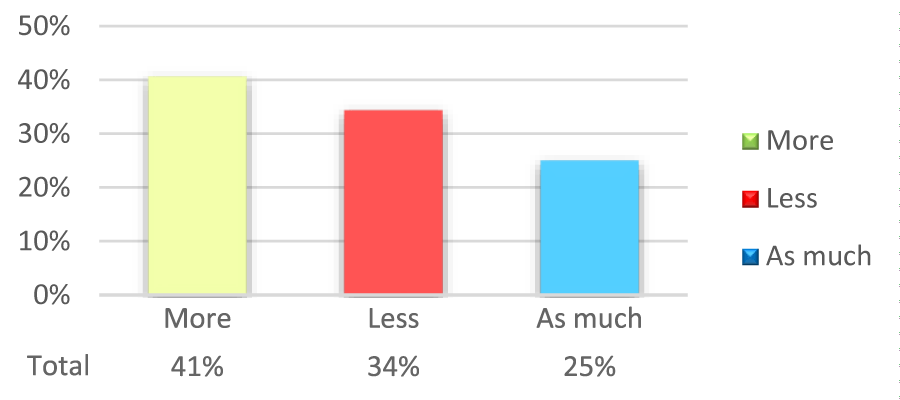



 Save to Mendeley
Save to Mendeley
